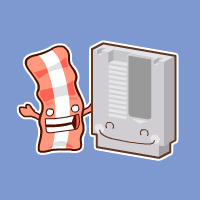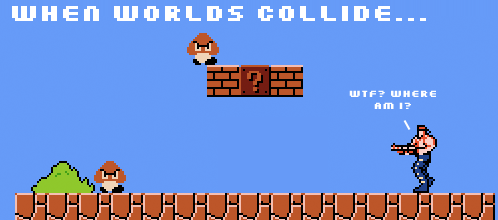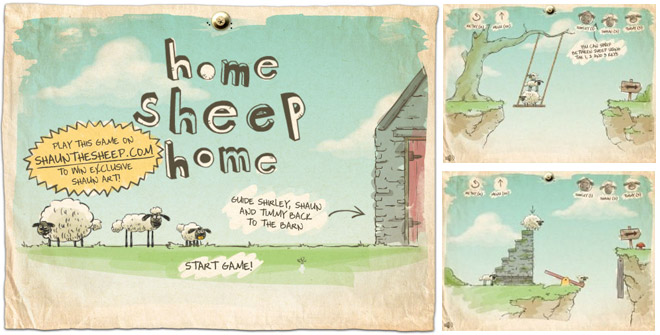![]() Let me open by saying that I really like iSlash. And because I like it, I can afford to be petty :) No, that’s not what I meant. But because it’s a great game it’s worth scrutinizing and the details of a well made game are all you can really look at improving.
Let me open by saying that I really like iSlash. And because I like it, I can afford to be petty :) No, that’s not what I meant. But because it’s a great game it’s worth scrutinizing and the details of a well made game are all you can really look at improving.
A Quick Overview of iSlash
First of all, if you haven’t played iSlash yet, go download it. iSlash could be described as the love-child of Fruit Ninja and Qix (or Jezzball if you never had a GameBoy). The goal of the game is to slice the level (a piece of wood) down to a small enough piece that the iSlash gods allow you to advance. On each level there are a bunch of ninja stars bounding around. The rules are simple. 1) Avoid the ninja stars while slashing and 2) wood pieces will only be removed if they demarcate a portion of the level that contains no ninja stars. As the game progresses the level shapes get more complicated, ninja stars of different types emerge and powerups are added. Here’s the trailer:
The Dilemma
 Since it’s a fun game I’ve been racing through it. It’s truly got that “just one more level” addictive quality about it. As a result, I’ve now finished all 100 levels and I want more. So I went back and started trying to get 3 stars on every level, hoping it would unlock the additional levels added in the latest update. All was going well until I hit Level 27 of Set 1, the first level that put up a fight. Exciting!… challenge is good.
Since it’s a fun game I’ve been racing through it. It’s truly got that “just one more level” addictive quality about it. As a result, I’ve now finished all 100 levels and I want more. So I went back and started trying to get 3 stars on every level, hoping it would unlock the additional levels added in the latest update. All was going well until I hit Level 27 of Set 1, the first level that put up a fight. Exciting!… challenge is good.
Up until this point I had developed a very general strategy; try to remove large chunks in a single slice, remove the metal first and try not to cordon any of the ninja stars off onto their own wooden island. Pretty basic stuff… more than adequate for clearing all 100 levels. But when I went to work on getting all 3 stars, my strategy wasn’t getting it done.
After 5 or 10 minutes of playing Level 27 I’d completed it many times, though never with a rating better than 2 stars. This was enough time for me to raise an eyebrow. I needed a new strategy.
Back to the Drawing Board: Improving Our Strategy
 I took to the level end screen to see if maybe I’d missed a clear explanation of what type of performance would yield 3 stars. Sometimes the developer provides a time or score goal, but no such luck. This was a bummer, but not a huge deal. It’s often possible to intuit what you need to do in order to improve your performance. As frustrating as it is that Angry Birds doesn’t reveal the exact score benchmarks for 1, 2 and 3 star ratings, if you come up short you know what you have to do… get a higher score. And you already have a strategy for doing that. More destruction. Less birds. Fucking pigs…
I took to the level end screen to see if maybe I’d missed a clear explanation of what type of performance would yield 3 stars. Sometimes the developer provides a time or score goal, but no such luck. This was a bummer, but not a huge deal. It’s often possible to intuit what you need to do in order to improve your performance. As frustrating as it is that Angry Birds doesn’t reveal the exact score benchmarks for 1, 2 and 3 star ratings, if you come up short you know what you have to do… get a higher score. And you already have a strategy for doing that. More destruction. Less birds. Fucking pigs…
In iSlash we’re given 4 statistics about our performance on a level:
- Time
- Slashes
- Area Left (% of wood remaining)
- Score
Unfortunately, the user has no idea which of these 4 things factor into the 3 star rating system. This might cause problems for a user trying to develop a strategy for getting 3 stars, but let’s take a look.
We can almost certainly assume that the number of slashes is an important statistic, so let’s start there. Surely someone who gets the job done in 3 whacks deserves a higher rating than a player who whittles the level away with numerous tiny slices. There’s no clear indication of how this contributes to the rating. Rats.
 What about time? The movement of the ninja stars is different each iteration, which is great because it keeps the levels dynamic. The trade-off is that the user has no control over when the perfect time to strike will occur. Patient gamers like myself will lie in wait, preparing for the perfect time to slice a big chunk of the level away with the first cut. But am I being penalized for making my first cut 30 seconds into the game? And if I am, given that the movement is random, do I deserve to be penalized for something I cannot control? I assume time is important, but again I can’t be sure. Double rats.
What about time? The movement of the ninja stars is different each iteration, which is great because it keeps the levels dynamic. The trade-off is that the user has no control over when the perfect time to strike will occur. Patient gamers like myself will lie in wait, preparing for the perfect time to slice a big chunk of the level away with the first cut. But am I being penalized for making my first cut 30 seconds into the game? And if I am, given that the movement is random, do I deserve to be penalized for something I cannot control? I assume time is important, but again I can’t be sure. Double rats.
Area Left would seem like a nice way to separate the men from the boys, except that the percentage at which the level is complete is constant for all levels, which vary greatly in size and design. Additionally, once you hit the goal the level is over and it’s very rare that your final cut can account for more than a few percent. It’s just the nature of the game. So there’s not much room for variation on the area left. Rats. Rats. Rats.
This leaves score. The score, like Angry Birds, has potential to be a simple benchmark for where 2 stars ends and 3 begins. However, since we don’t know how each of the above contributes to the overall score, using points as a benchmark would give us something to aim for but we’d still be unsure of how to hit the target score. Now we need an exterminator.
A Possible Solution
Typically I’m in favor of peppering the user with statistics about their gameplay. Stats are easy to display because the game is already tracking all sorts of variables. It can be fun to see how many enemies you killed or how quickly you did it. But when the extra statistics detract from the experience, they become a liability. Displaying the time and the percentage remaining would make sense if iSlash had granular leaderboards, breaking each level down into categories of speed, efficiency and score. But the iSlash leaderboards only deal in scores.
 So what’s the solution?
So what’s the solution?
Use slashes for stars, leave time and area left to the score.
Make the number of stars earned directly related to the number of slashes used to complete a level. We know that completing a level as efficiently as possible is important. It’s clearly a great strategy and we know that cutting large pieces earn us powerups. So this should be the way you rate the performance because it’s almost certainly what the iSlash players are focusing on. To bring it home, show the required slashes to reach the next star rating adjacent to the earned rating. “3 stars at 8 slashes” If you earn 3 stars, you only see your three shiny stars and go on your merry slashin’ way.
With the star system clearly defined around the slashes, the score can become a function of time and area left, leaving people who want to compete globally to feverishly slash to their hearts’ content. The person at the top of the heap will still be the one who did it in the least slashes (i.e. the fastest, but it no longer directly contribute to the calculation of the score). Displaying the score would simply be a matter of adding the time score to the area left score, both of which are intuitively better if the numbers are lower. (not depicted above)
Users who want to achieve completeness will be able to develop a specific strategy around the number of slashes and those who are fueled by the allure of competition can continue to one-up their friends on the leaderboards.
This “problem” is by no means a show stopper. It’s still a great game, but I think it would be a more satisfying experience if the users weren’t left in the dark about the stars. I hope that there is an iSlash 2 in the works and I hope that, if there’s time, the developers will consider these thoughts. As for you, go pickup iSlash on the App Store now.


 For the cave-dwellers who haven’t played either game yet, the premise is pretty standard. You play as a robot with a grappling hook who has to make his way through a psychedelic arena of pits, traps and other dangers. The sequel delivers more of the same, with a few new additions such as switches, coins and new kinds of moving platforms and obstacles. And of course the charming Portal-esque computer is back to taunt you along the way. Though still 8bit-ish, the graphics are much cleaner and the robot moves a bit more adeptly; a welcomed improvement. Overall it’s not a huge departure from the original, which is a good thing because Give Up Robot was extraordinarily well received.
For the cave-dwellers who haven’t played either game yet, the premise is pretty standard. You play as a robot with a grappling hook who has to make his way through a psychedelic arena of pits, traps and other dangers. The sequel delivers more of the same, with a few new additions such as switches, coins and new kinds of moving platforms and obstacles. And of course the charming Portal-esque computer is back to taunt you along the way. Though still 8bit-ish, the graphics are much cleaner and the robot moves a bit more adeptly; a welcomed improvement. Overall it’s not a huge departure from the original, which is a good thing because Give Up Robot was extraordinarily well received. I feel like Matt did correctly what we all hoped Nintendo would do after Mario Kart 64… deliver the same basic engine with new levels and some new tricks. Instead Nintendo puked up Double Dash. What the fuck, Nintendo? If you haven’t played
I feel like Matt did correctly what we all hoped Nintendo would do after Mario Kart 64… deliver the same basic engine with new levels and some new tricks. Instead Nintendo puked up Double Dash. What the fuck, Nintendo? If you haven’t played 
